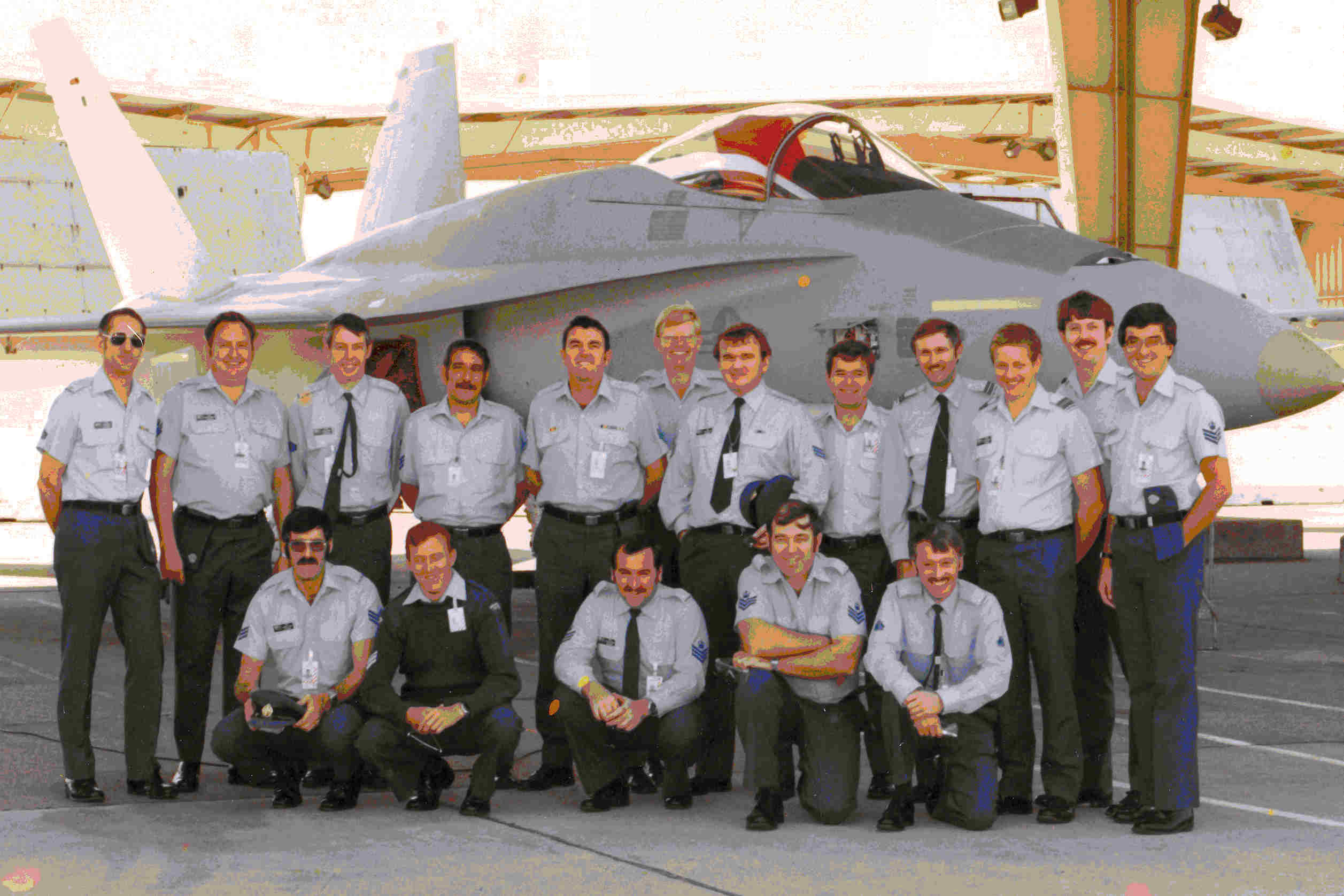|
||
| What are they up to now?? | ||
|
Laurie Lindsay
Laurie Lindsay grew up in Collingwood during the 40’s and 50’s. In those days, you supported both Collingwood and the Labor Party or life was very difficult. In 1959 at the age of 15 he was starting to get into trouble and he was heading towards delinquency (some unkind people say that he has not changed). His mother with the assistance of his step-brother (Warrant Officer John Lindsay a WOD) “conned” him into joining the Air Force, by saying that the RAAF would educate him for nothing and pay him at the same time. Thus, a very gullible Laurence joined the Air Force and spent six of the next nine years at RMIT, plus nine months at the School of Radio. The decision to be a radio technician was not based on a yearning for electronics, but more to do with the fact, that Radio Apprentice School at Frognall in Canterbury was a better place to be, than RSTT in Wagga. So began a career in avionics. |
||
|
Laurie joined the RAAF on 8th Feb 60 as a member of 14 Radio Apprentice Course and graduated in August 1962 as a RADTECHA. Whilst he was an apprentice he managed to use one of those WWII condoms that the Air Force used to issue to would be Romeos.
Their use-by-date would have been 1940 and one of them had a catastrophic failure. He thought about submitting a defect report, however, by the time he found out about such forms it was far too late.
Laurie and Joan were married at the end of 1961 and Radio School put out a unique SOR that only went to pay section, thus allowing the family to get marriage allowance. This was vital, seeing that it was twice the apprentice pay. |
The Lindsays on Graduation Day, August, 1962. |
|
|
Whilst his course mates went on glamour postings to Townsville, Amberley, Williamtown and Richmond, Laurie went to Point Cook, where he worked on Winjeels and the TR1936. At the beginning of 1964, Laurie was posted 150 miles to East Sale. He tried to get out of the posting by saying he was going to night school and that Sale Tech did not offer the subjects he wanted to study. Wally Solomons told him that his request was denied, because the Air Force wanted ex-apprentices to have experience in all types of aircraft radio equipment. So down to Sale he went and worked on (yes, you guessed it) – the TR1936.
Laurie decided that Sale was too cold and to get out of there he applied for a diploma course. He spent the next four years back at Frognall. On his first night he went into the huts, inhabited by the second year cadets, looking for Bob Holsken who was an old friend from his apprentice days. He was accosted by a pimply youth who yelled “What are you doing in here, sprog?” Pimply second year youth was lifted up on tip toe by his tie and politely told that he was an immature adolescent and to mind his manners (expletives deleted)
After Frognall, Laurie was posted to ARDU where was engaged in navaid flight inspection duties. Then, after 10 years, the first posting out of Victoria to 38 Squadron, where he worked with such veritable gentlemen as “Bucket Mouth” Broughton, “Porky” Donoghue and Wally (I will go to Charleville to do the engine change, because it will keep me off the booze) Jolly. In 1972, there was another posting south to radio school where he was in charge of officer training. Also during this period he taught RAD 7. Laurie had studied pulse techniques at Melbourne Tech during his apprentice days. When he went to the School of Radio in 1962, Laurie Hull gave 14 Course another crash course in the subject. He also studied it at RMIT during the diploma course. However, he learnt nothing compared with what he learnt when he had to teach it and he was just four hours ahead of the students.
Laurie ‘spat a huge dummy’ when the Kerr/Woodward report came out on pay (when he was “porked” he was on non-reduction allowance from LAC). He submitted a 12/A/12 to the Governor General, which was denied, and so he told the Air Force to stick its career up its backside. In 1974, he joined the DCA Flying Unit as an electronics engineer, where he stayed until 1997, when he was (happily) retrenched after the Liberal government privatised flight inspection and disbanded probably the best flight inspection organisation in the world.
In 1981 after 20
years of marriage and three daughters, Joan retrenched him (not before
time). Those three daughters have produced three granddaughters and two
grandsons. After some years of single life he met his
He is currently the CEO of Avionic Design which is a design organisation specialising in aircraft electronics. He is also the chief engineer, the chief draftsman, the CFO, the human resources manager, bottle washer and the chief cleaner. Since leaving the Air Force, Laurie has worked on more than 100 aircraft types from Bonanzas to B747s.
He is now old, bald, fat and (still) grumpy. Testosterone has moved, from the lower body where it used to rule his life, to the top of his skull where it has removed most of his hair. The photo on the left shows that he is still quite capable of spitting the dummy.
The photo on the right was taken at a Frognall reunion last year (2007).
|
||
|
Ron Clayton
Ron joined the RAAF in Perth WA (not from the real Perth in Tassie), was given his travel documents and was told to report to the Perth RTO on the 16th January, 1963. He was told he was to join number 17 Radio Apprentice Course which was at Laverton RAAF Base just out of Melbourne (for a young bloke living in Perth in 1963, Melbourne was another world away) and that he would be travelling with a few other blokes from WA who were also going to be Radio Appies.
After an horrendous train trip across the Nullarbor, he arrived at Laverton 3 days later. It was the day of his 16th birthday. Number 17 Radio Apprentice Course graduated on the 11th August, 1965. |
||
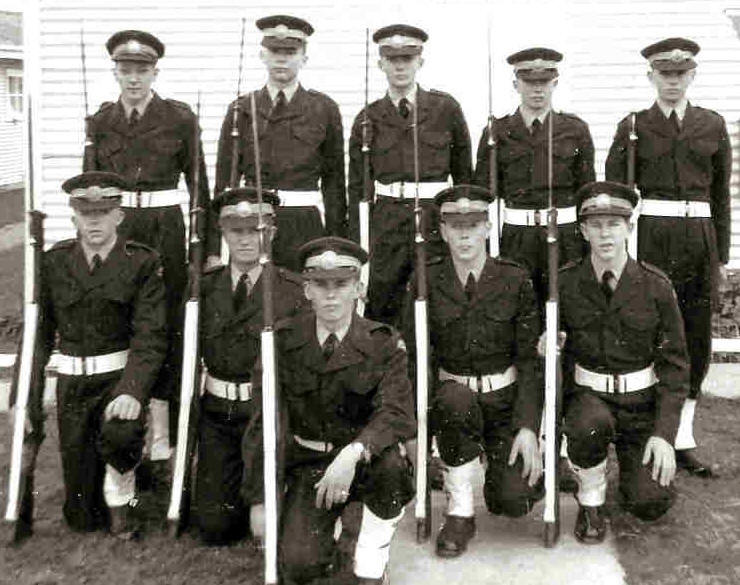 |
||
|
1963 17 Radio Apprentices Back row (L-R) John Pergunas (WA), Chris short, Brian Richardson, N. Chappel, Bill Holker (WA). Front row (-R): Pete Duncan, Nev Wren (WA), Ray Carrington, Ron Clayton (WA), Graeme Crawford.
We come in peace – shoot to kill!!! |
||
|
After Laverton, he was posted to 38Sqn at Richmond and in December 1968 he was posted to 35 Sqn in Vung Tau where he stayed until December 1969.
After Vietnam it was back across the Nullarbor to Pearce where the Macchi trainer had replaced the Vampire. Over there he learnt how to bend tuning vanes in the ARC-51BX UHF and service PRC beacons in a screened room.
For recreation, he and a couple of other blokes formed a rock band called Rebound which played at pubs in Perth and the Airmen’s club at Pearce.
The members of Rebound were all RAAF blokes and included John ‘Spud’ Spurgeon (vocals), Peter Van Loggerenburg (drummer), Mick Butcher (guitar), Mick Fenton (guitar), Jim ‘Scotty’ Potter (vocals).
The Photo at right was taken in 1969 at Vung Tau – This band was called the “Jackaroos” and featured Vic Cowdroy (drums), Graeme ‘Snoopy’ Shiels (guitar and vocals), Ron Clayton (guitar and banjo), Alec ‘Mang’ Robertson (bass guitar).
In 1971 Ron got his third hook and was sent back across the Nullarbor to Wagga to complete a SuperMan course.
|
||
 |
||
|
1971. No 36 SergSupMan course Wagga:
Back row L to R Vic Horton, Peter Riley, Mick Hennesy, Kev Marrinon, Lofty Russell, Fred Spencer, Brian Richardson (17 Appy). Mid Row Phil Hall, Brodie Straughan, John Doran, Tony Wood, ‘Springy’ Springfield, Jake Henson, Ron Clayton, Noel Mitchell. Front row Ken Gregory, Casey Corcoran, John Ireland, Bill Herbert, Jack Mullins, Robby Robinson, Gabby McPherson, Bob Ellem, Lew Jones.
After completing the Superman
course, Ron, along with Col Lacey (OIC), Bill Malkin (20 App), Bill Minnis,
Dick
Cenpac started life as a Burroughs D84 in 1965 and evolved into a brick that could be dropped from an aircraft. It was well ahead of its time with 32 bit architecture. It could be programmed via a separate box containing 32 switches.
Training on the Cenpac computer at Lowry AFB in Denver introduced him to computers and computer programming, a hobby he has continued in retirement.
Later they all shifted to Las Vegas for 3 months on the job training where they worked the late shift, 4pm to midnight, then hit the Las Vegas strip until morning.
They spent 2 weeks snowed in, living on chocolate bars, while rebuilding a Christmas treed Cenpac at Mountain Home USAF base in Idaho before returning home in 1973.
|
||
|
|
||
|
1975 Inter service Volleyball Team – Back row L to R Geoff ‘Boorie’ Neill, Bill Malkin (20 App), Ron Clayton, Scotty Stratford, Bob Ceasor, Bob Stewart. Front row ???, ???, Norm Davenport, Tony ?, Danny Parfitt, Paul Welch OIC. |
||
|
In 1976, he was married and
was posted to Edinburgh to work on P3B Orions. He found being promoted
meant more supervisory roles and less time on avionics repair. Mick Woods
was the Radio Section WO IC who had
In 1980 he was posted to SupCom in Melbourne where he spent most of the time in spares assessing working in Basic on a Texas Instruments 990 computer developing the PATTRIC repairable spares software package with Ken Shepherd (sumpie) under the direction of Henry Detjen and Keith Turner. He also wrote and operated a software package on a HP calculator to run the Support Command squash competition.
In 1982 it was back to the US again, to St Louis, to learn all about the F/A-18, He continued software work providing budgetary estimates and assessing support equipment requirements |
||
|
1982 St Louis
Back row L to R Graham Dodd, Graham Purbrick, Ron Clayton, ???, John Barbour, Peter Knight, Andy Ronalds, ???, Keith Turner, Mark Schirmer, ???, John Easton. Front row ???, ???, Shorty Stevens (17 App), Doug Hillebrand, ???.
|
||
|
In 1985, after 23 years, he’d had enough and took his D. He returned to Busselton in WA, his hometown and ran the squash courts. He went to the End of Apprentice reunion at Laverton in December 1992 but Brian Richardson was the only other 17 course member who attended.
In 1999 he decided to go into partial retirement. His time is now spent working on a tournament software package in Excel and VBA and he’s a volunteer on the Australian Masters Squash committee. They run championships in a different state each year which allows him to do a 3 month camping trek in the camel (his 1991 Nissan Patrol) across the Nullarbor
|
||
It’s not whether you win or lose – rather where you place the blame. |
||
|
|
||
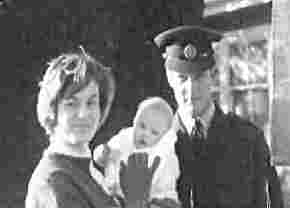
 Laurie’s
only sporting ability was that he could run fast. This enabled him to win
three inter service 100 yards championships and six inter unit 100 yard
titles. He currently holds the inter unit 100 yards record of 10.1 seconds
and it will never be beaten, because they now run 100 metres. He also won
many inter unit and inter service 220 and 440 yard titles. His only rugby
ability was his speed and this allowed him to play in the RAAF 1st
Grade teams in 1963 and 1964 as well as several interservice rugby teams
between 1963 and 1973. In 1964 the Army hired a train to ferry all the
winter interservice teams up to
Laurie’s
only sporting ability was that he could run fast. This enabled him to win
three inter service 100 yards championships and six inter unit 100 yard
titles. He currently holds the inter unit 100 yards record of 10.1 seconds
and it will never be beaten, because they now run 100 metres. He also won
many inter unit and inter service 220 and 440 yard titles. His only rugby
ability was his speed and this allowed him to play in the RAAF 1st
Grade teams in 1963 and 1964 as well as several interservice rugby teams
between 1963 and 1973. In 1964 the Army hired a train to ferry all the
winter interservice teams up to
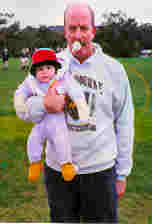
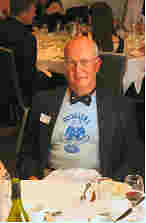

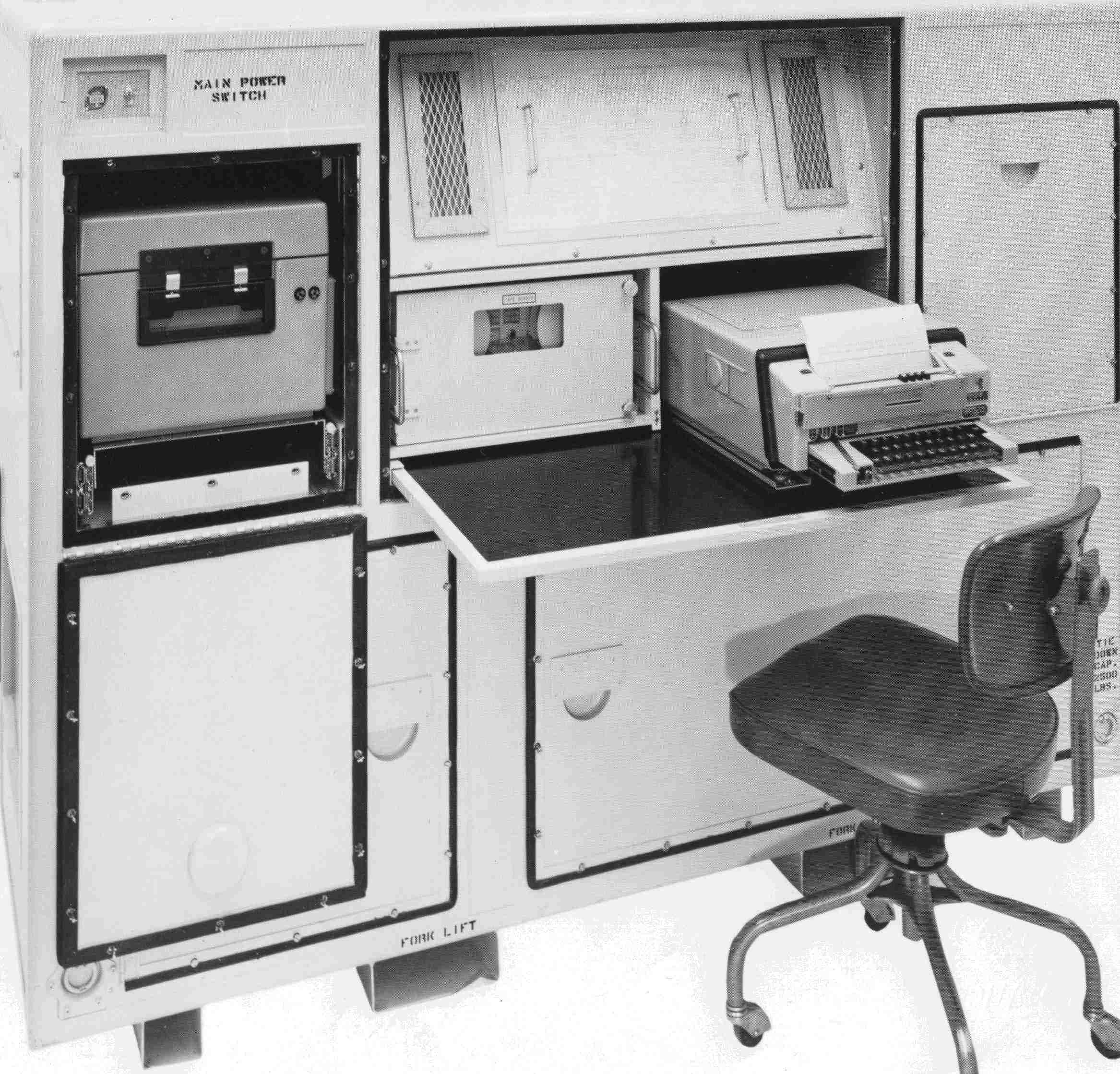
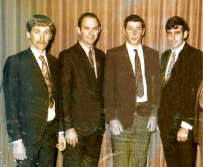


 the
difficult job of juggling staff rotation between the workshop, flight
line, duty crew, deployments, training and leave.
the
difficult job of juggling staff rotation between the workshop, flight
line, duty crew, deployments, training and leave.